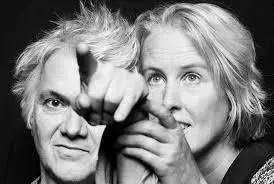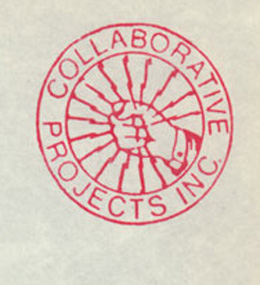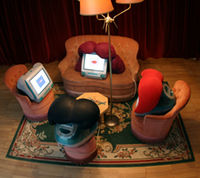
Psychogeography is the exploration of urban environments that emphasizes interpersonal connections to places and arbitrary routes. It was developed by members of the Letterist International and Situationist International, which were revolutionary groups influenced by Marxist and anarchist theory as well as the attitudes and methods of Dadaists and Surrealists. In 1955, Guy Debord defined psychogeography as "the study of the precise laws and specific effects of the geographical environment, consciously organized or not, on the emotions and behavior of individuals." One of the key tactics for exploring psychogeography is the loosely defined urban walking practice known as the dérive. As a practice and theory, psychogeography has influenced a broad set of cultural actors, including artists, activists and academics.
Video game art is a specialized form of computer art employing video games as the artistic medium. Video game art often involves the use of patched or modified video games or the repurposing of existing games or game structures, however it relies on a broader range of artistic techniques and outcomes than artistic modification and it may also include painting, sculpture, appropriation, in-game intervention and performance, sampling, etc. It may also include the creation of art games either from scratch or by modifying existing games. Notable examples of video game art include Cory Arcangel's Super Mario Clouds and I Shot Andy Warhol, Joseph Delappe's projects including "Dead in Iraq" and the "Salt Satyagraha Online: Gandhi's March to Dandi in Second Life," the 2004-2005 Rhizome Commissions "relating to the theme of games," Paolo Pedercini's Molleindustria games such as "Unmanned" and "Every Day the Same Dream", and Ian Bogost's "Cowclicker."

Jodi, is a collective of two internet artists, Joan Heemskerk and Dirk Paesmans, created in 1994. They were some of the first artists to create Web art and later started to create software art and artistic computer game modification. Their most well-known art piece is their website wwwwwwwww.jodi.org, which is a landscape of intricate designs made in basic HTML. JODI is represented by Upstream Gallery, Amsterdam.
MTAA is a Brooklyn, New York-based conceptual and new media art duo composed of M.River and T.Whid. The two artists founded MTAA in 1996. Their often humorous studies of networked culture, the economics of art and digital materials take the form of web sites, videos, installations, sculptures and photographic prints.

Colab is the commonly used abbreviation of the New York City artists' group Collaborative Projects, which was formed after a series of open meetings between artists of various disciplines.
Yael Kanarek is an Israeli American artist based in New York City that is known for pioneering use of the Internet and of multilingualism in work of art.

Golan Levin is an American new media artist, composer, performer and engineer interested in developing artifacts and events which explore supple new modes of reactive expression.
Rhizome is an American not-for-profit arts organization that supports and provides a platform for new media art.
Sanford Biggers is a Harlem-based interdisciplinary artist who works in film/video, installation, sculpture, music, and performance. An L.A. native, he has lived and worked in New York City since 1999.
Ursula Endlicher is a New York City based Austrian multi-media artist who creates works in the fields of internet art, performance art and installation art.

Marina G. Zurkow is an American visual artist based in New York City who works with media technology, animation and video. Some of the less traditional mediums are known to be dinners, life science and bio materials. Her subject matter includes individual narratives, environmental concerns, and reflections on the relation between species, or between humans, animals, plants and the weather. Her artworks have been seen in solo exhibitions at DiverseWorks in Houston Texas and at FACT in Liverpool. Zurkow is the recipient of a Creative Capital grant and has had fellowships from the Guggenheim and the Rockefeller Foundation.

Leila Christine Nadir is an artist and writer and Associate Professor at the University of Rochester, where she is also Founding Director of the Environmental Humanities Program.

Kristin Lucas is a media artist who works in video, performance, installation and on the Internet. Her work explores the impacts of technology on humanity, blurring the boundary between the technological and corporeal. In her work she frequently casts herself as the protagonist in videos and performances where her interactions with technology lead to isolation, and physical and mental contamination.

Jonas Lund is a Swedish conceptual artist who creates paintings, sculpture, photography, websites and performances that critically reflect on contemporary networked systems and power structures. An example of this is his exhibition "The Fear of Missing Out" (2013) at MAMA, Rotterdam.
Patrick Lichty is a conceptual media artist, activist, curator, and educator. Lichty is currently a Creative Digital Media professor at Winona State University.

Gretta Louw is a multi-disciplinary artist who has worked with artforms as varied as digital media and networked performance, installation and video art, and fibre art. She lives and works in Germany and Australia. Her artistic practice explores the potential of art as a means of investigating psychological phenomena, particularly in relation to new technologies and the internet. Her focus is on how new digital technologies are shaping contemporary experience.
Michelle Lisa Herman is an American contemporary and conceptual artist who works with sculpture, video, installation, and painting. Herman's work draws on theoretical and philosophical research, feminist and disability politics, comedy, and conceptualism and investigates ideas of agency and invisible systems of power in technologically mediated society. Herman is currently based in Washington, DC.
RaFia Santana is a non-binary American artist, musician, and performer based in Brooklyn, NY. Her work ranges from animated gifs to self-portraiture, videos, and performance to editioned clothing and electronic music exploring gentrification, the millennial mindset, mental health, and the lived black experience. They use the internet as a medium to share their artwork, empower black and brown communities, and challenge ideas of solidarity and alliance. She had exhibitions and/or performances at the Eyebeam, AdVerse Fest, SleepCenter, Times Square Arts, International Center of Photography, Schomburg Center for Research in Black Culture, Babycastles, Museum of the Moving Image and Museum of Contemporary African Disaporan Arts, Roots & Culture amongst many notable venues. Her work has been featured in publications such as Huffington Post, HyperAllergic, Rhizome, ArtFCity, Vogue, Teen Vogue and Salon. They have participated in panels, performances and discussions such as Cultured Magazine, "Late at Tate Britain", Creative Tech Week NYC, Afrotectopia at Google NYC, NYU, "Black Portraitures IV: The Color of Silence" at Harvard University and International Center for Photography. Their music is released through Never Normal Records.
Shawné Michaelain Holloway is a Chicago-based American new media artist and digital feminist whose practice incorporates sound, performance, poetry, and installation with focuses in new media art, feminist art, net art, digital art. Holloway engages with the rhetoric of technology and sexuality to excavate the hidden architectures of power structures and gender norms.











